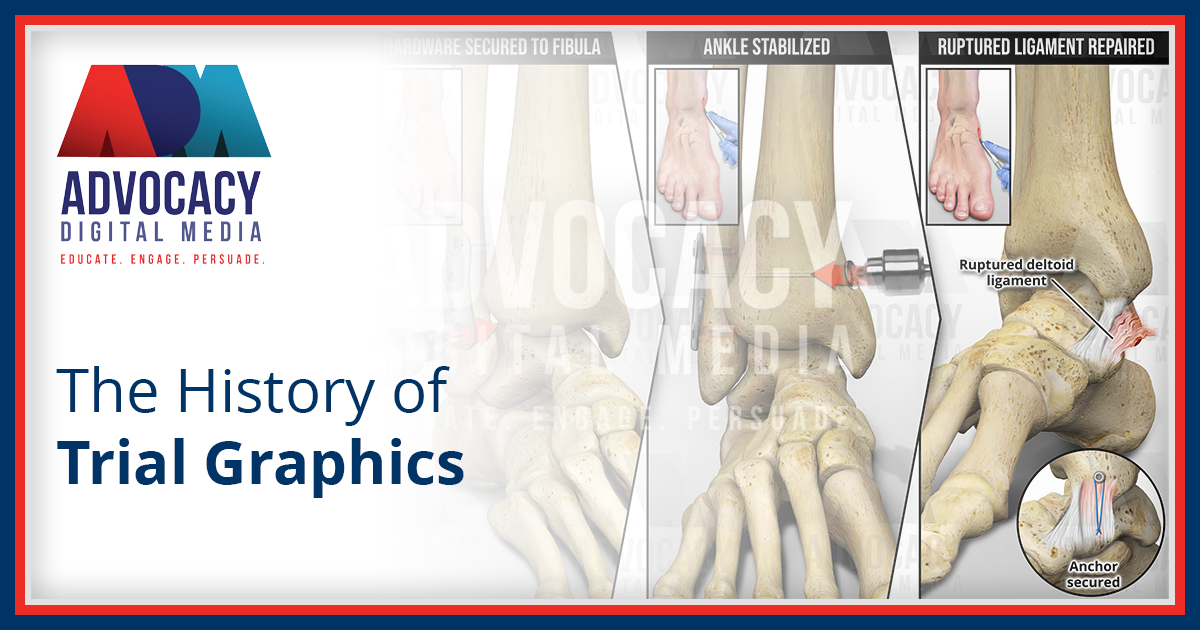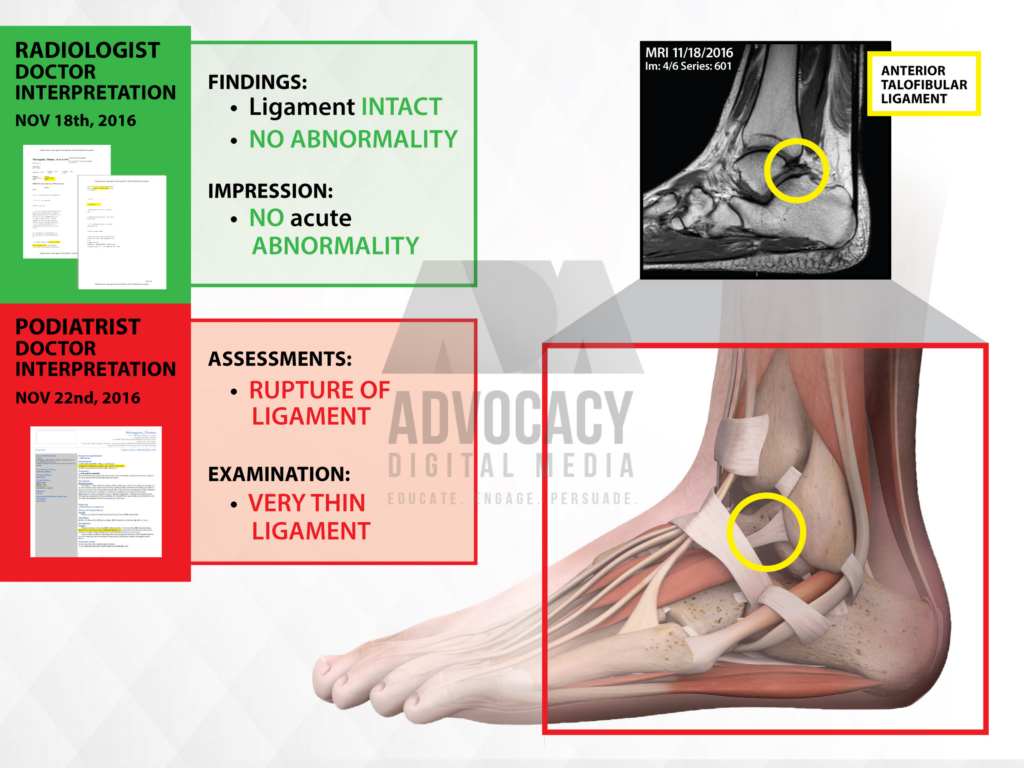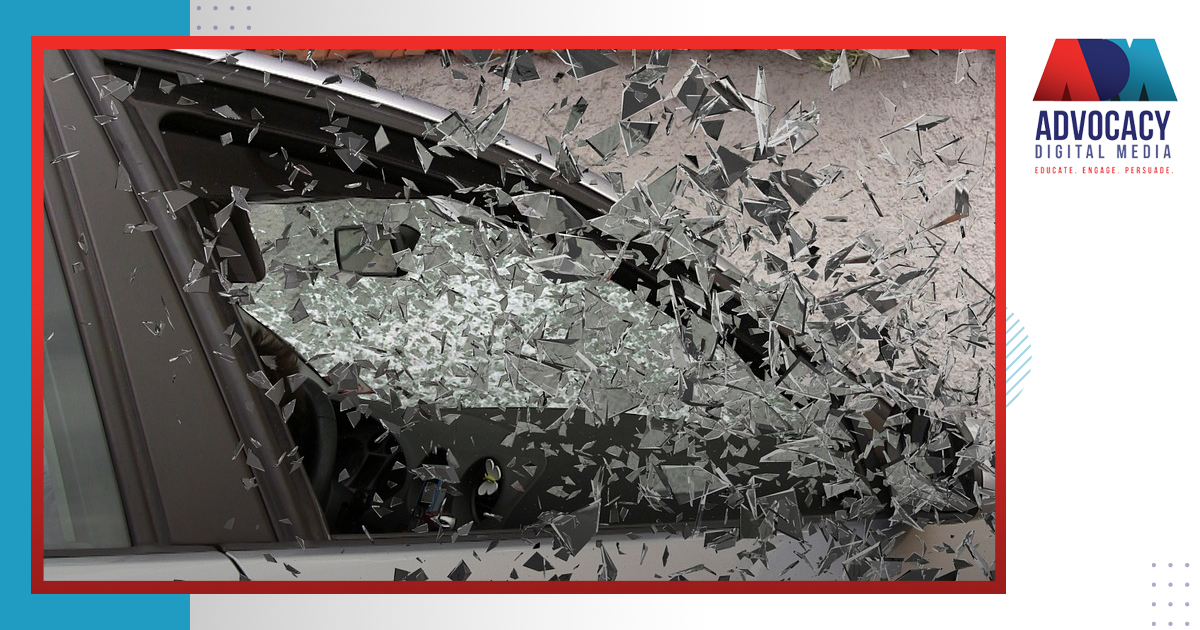The History of Trial Graphics
Today’s modern courtrooms demand that lawyers present their evidence with highly attractive, stunningly accurate visuals. Illustrations, infographics, presentations, and animations aren’t optional anymore—they’re expected. It wasn’t always like this, though. So, let’s get into the history of trial graphics and what the future may hold for this industry.
Trial Graphics: The Past, Present, and Future of Visual Litigation
Trial graphics aren’t as new as you might think. Ever since the advent of organized legal proceedings, people have been using drawings and sketches to illustrate evidence. However, the practice of courtroom graphics and reconstructions began to take off at a greater rate once digital renderings became more widely available.
The very first digital image was created in 1957 using a rotating drum scanner. This simple graphic captured the image of a three-month-old child and measured a maximum of only 176 pixels on one side.
Only 15 years later, the world’s first 3D-rendered movie, “A Computer Animated Hand,” was created. Cameras captured data from small polygons on a physical hand model, which was then digitized.
Today’s trial graphics rely on advanced technology and software to accurately depict and re-create a wide variety of evidence, including:
- Confusing or convoluted timelines
- The inner mechanics of a dangerous or defective product
- Driver error prior to an accident
- Doctor negligence or error
- Overviews of accident scenes or settings
- Multiple perspectives
- The progression of an illness or disease
- Spread of illness via respiratory droplets
- Complex medical procedures
- Animal behavior
At Advocacy Digital Media, we rely on multiple sources of evidence and data to ensure that we create the most meticulously accurate trial graphics possible. This includes accident reports, footage, eyewitness reports, medical reports, imaging results, event data recorders (EDRs), expert testimony, and more. Today’s trial graphics are rooted in science and factual evidence.
And, while we can’t say with 100% certainty what the future holds for trial graphics, we can confidently say that we at Advocacy Digital Media plan to be at the forefront of the evolving legal demonstrative industry.
We’re already leading the way into the future. With our trademarked 3D Realization™ technology, we’ve proven our dedication to revolutionizing the world of trial graphics.
How the Technology of Courtroom Demonstrative Aids Has Evolved
Trial graphics were once heavily reliant on an artist sitting down with a physical medium, such as pen, paper, and ink. In today’s world, courtroom illustrations and animations are constructed almost entirely in the digital space using:
- 3D modeling software
- Scanners (including 3D and handheld scanners)
- Digital drawing software
- Augmented reality (AR) technology
- Virtual reality (VR) technology
- Computer-aided design (CAD)
- 3D Realization™ technology
Our expert team of animators, illustrators, graphic artists, and storytellers isn’t limited to just one type of technology or software. Because of the high stakes associated with legal trials and injury claims, we rely on a range of technology to help lawyers tell their clients’ stories.
Ways To Elevate Your Use of Trial Technology
Including a customized graphic or animation is a great start to improving the overall strength and validity of your case. There’s more that you could be doing, though. Here are our top 4 ways to elevate your use of trial technology in the courtroom:
- Pair expert testimony with animations and illustrations based on their evaluation of the case.
- Present accident reconstructions alongside police reports and eyewitness testimony.
- Talk through timelines and data compiled in illustrated timetables and infographics.
- Always provide explanations and clarification for all illustrations, animations, graphics, and 3D graphics.
While it might be true that a picture is worth a thousand words, there’s no room for error or misconceptions in a legal case. To use your trial technology most effectively, pair it with testimony and physical evidence.
Remember, your trial graphic is just one piece of a much larger puzzle—it has to work in conjunction with every other aspect of your case.
Advocacy Digital Media Looks Toward the Future
Advocacy Digital Media is always looking toward the future because we know the weight and legacy that our work carries. What we’re doing doesn’t just affect the here and now; it also impacts the future physical, emotional, and financial well-being of injury victims.
And we know that the history of trial graphics continues to inform and shape the world of legal demonstratives today. Knowing where we came from is part of knowing where we’re going.
Let us put our years of innovation and advancement behind you and your client. Contact us, and we’ll schedule you for your first information meeting with a member of our team.








